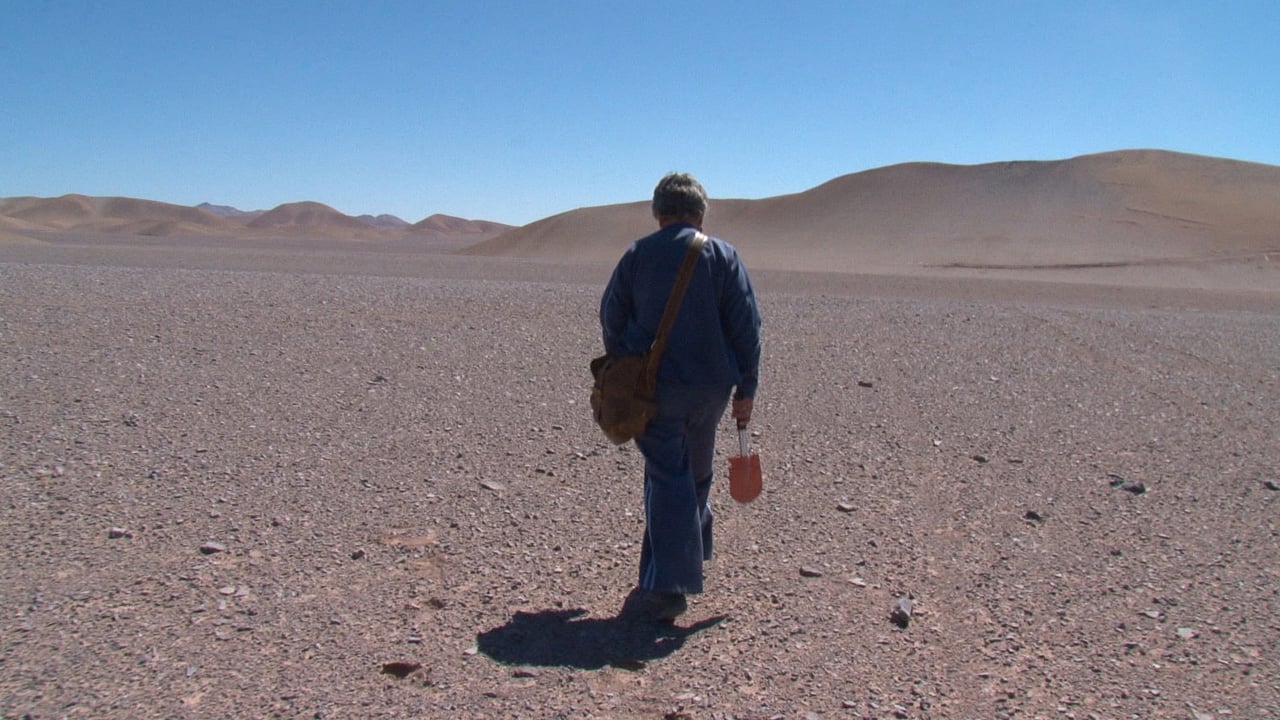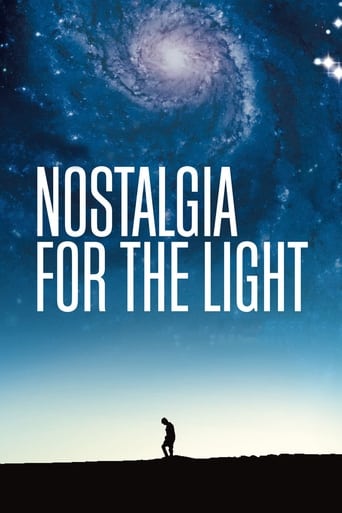

I have seen a few of the small number of documentaries featured in the book 1001 Movies You Must See Before You Die, this Spanish language one I was hoping would be another worth entry. Narrated by director Patricio Guzmán the film opens in the Atacama Desert in Chile, a place in the world with no moisture whatsoever. Astronomers are peering deep into the cosmos of space, looking at the alignment of planets and stars, searching for answers concerning the origins of life, on Earth and possibly elsewhere. Also in the desert are a group of women sifting through the sand searching for the body parts of people, including their loved ones, who were killed in concentration camps and dumped unceremoniously during the regime of Pinochet. This film is both an insight into astrology and a political look into Chile's dark past, it has great visuals of the desert and outer space, and also features archaeology and footage of the historical horror of death under Pinochet. I will admit it was not easy to follow the entire film, because it switched the two genres every so often, and you obviously have to read the subtitles during, it's not the sort of film I'd see more than once, but it was an interesting enough documentary. Worth watching, at least once, in my opinion!
... View MoreThis film is not a documentary in the traditional sense. It is more a work of poetry, or a spiritual experience.The brutal results of Pinochet's military dictatorship are meshed with the search for the origins of the universe. Both subjects deal with the past, as we only have past and future; there is no present as Augustine said many years ago.So, astronomers are really archaeologists. They study space to discover the past. Writer/director Patricio Guzmán combines this "archaeology" with the archaeologists who search the desert for the bodies buried by Pinochet.A fascinating story.
... View MoreThe Atacama Desert in Chile is believed to be one of the driest places in the world. Some of its river beds have not seen water for more than 120,000 years. Because of its high altitude, nearly non-existent cloud cover, dry air, and lack of light pollution and radio interference from the very widely spaced cities, the desert is one of the best places in the world to conduct astronomical observations.As a result, the world's astronomers flock to the Atacama to gaze out into the universe and to search for evidence and artifacts from the beginning of time. These "archaeologists of time" decompose the stars into their constituent elements one of which is calcium. Elsewhere in the desert, other "archaeologists" search among the pebbles and dust for evidence of calcium. They are looking for bones. Or at least fragments of bones. They are the mothers, brothers, sisters and wives of Chile's disappeared. During Pinochet's military dictatorship many thousands of Chileans were abducted and killed and their bodies disposed of in the Atacama. Forty years later their relatives still search the desert for any sign or bone fragment that might give a clue to where their loved ones lie.Patricio Guzman juxtaposes these two sets of archaeologists in his beautiful documentary, "Nostalgia for the Light". In many ways they both seek answers to the same question. They try to find the true meaning of life. There are some very moving scenes in this movie. In one, a lady in her seventies sits in the desert, in tears, and proclaims that she will never stop looking for the remains of her loved one. In the other, a young Chilean astronomer, whose parents were killed by the government when she was only one, clutches her new born baby (this scene is just wonderful). She displays the transcendent wisdom of someone of far greater years as she explains how she has, through her work and observations, come to terms with their murder.An unmissable movie.http://sofia-notes.blogspot.com/2011/09/nostalgia-for-light.html
... View MoreChile's immense Atacama desert is the setting for this stunning documentary that looks at the parallel between astronomers and relatives searching for remains of loved ones.We are firstly greeted with an array of huge vistas of space, images taken from the various telescopes trained on the universe. They are glorious to look at and so huge in scale they make you feel insignificant. As the film progresses we are introduced to a new story, that of The Disappeared, the thousands of people who went missing during the years of Chile's Pinochet regime in the 70's. We meet relatives who still hope that the remains of their loved ones will be found, so they can finally be laid to rest. Pinochet had a series of concentration camps in the Atacama desert, once they were salt mines. Prisoners were killed and their remains scattered through the desert. How many, or exactly where, is something unknown. For decades, relatives have come to the desert and spent countless days digging and searching for remains, body parts, fragments of bones. Occasionally remains are found, a closure for somebody somewhere.The relatives we meet are full hope that they will find the remains of the loved one missing for over 30yrs. They long to have that knowledge, that piece of mind and that's why they return. It is devastating to hear these people, all women, talk. They talk of the hope they have at the start of each day and the despair that takes over after a fruitless day. They talk of being able to die at peace if they find their loved one. The idea that in modern times such atrocities were committed and that even today such little is known is so disturbing, showing the true horrors that humanity can commit. Yet through this horror, there is hope, small groups of people continue the fight to find loved ones and recover the truth.The film draws on the parrallel that these two groups, the relatives and the star gazers lead simliar lives. They are both searching, searching for truth, for understanding. Both are working in the past, in that images from space are from the past, with light reaching us after something has happened, the relatives relive the past everyday hoping for some revelation. Somehow, despite the very obvious differences there is connection. Much of the connection and the film itself comes from the idea of space and scale. Footage of the Atacama shows it's immensity, small dots of humans work their way across tiny areas of a seemingly endless expanse. Mountains rise up, a toy like train crawls across the land. Even the telescopes are immense, the buildings they stand in, the mechanisms that run them are simply huge. The images, so huge and almost overwhelming fill the screen, just as the huge task that those searching for remains, searching for truth, fills the heart.It is a beautifully made film, that is at once both fascinating and immensely sad, but offers hope that perhaps we live in a better time and that people are have been able to help keep the past alive.More reviews at my site iheartfilms.weebly.com
... View More